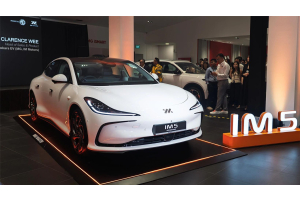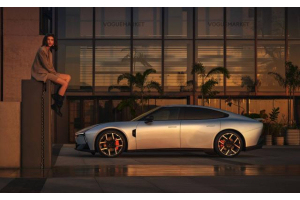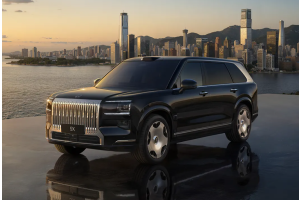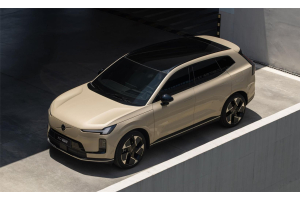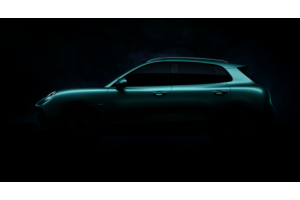Transportation
-
July 17, 2025
Next-Gen Toyota Corolla Renderings Spark Global Interest: A Glimpse Into the Future
While Toyota has yet to release official images, next-generation Corolla renderings based on credible insider information and expert automotive design analysis have ignited excitement across international auto media platforms. These previews reveal significant design leaps in both aesthetics and technology.
Exterior Design Breakthroughs
The renderings showcase a radical evolution of Toyota's best-selling nameplate, blending the brand's DNA with futuristic cyberpunk influences:
- Signature C-shaped headlights now integrate with a full-width LED light bar and hammerhead-inspired front fascia, creating unprecedented nighttime recognition
- Flush-mounted door handles and graphite chrome accents optimize aerodynamics while elevating premium visual appeal
- The fastback-style rear features an integrated ducktail spoiler and completely redesigned LED taillights that break from current Toyota design language
- Aggressive
-
April 29, 2025
BYD's "Shenzhen" - World's Largest Car Carrier Makes Maiden Voyage
Record-Breaking Ship Sets Sail with 7,000+ NEVs
The BYD "Shenzhen", currently the world's largest pure car/truck carrier (PCTC), embarked on its historic maiden voyage from Taicang Port, Jiangsu on April 27, 2025. The vessel carried over 7,000 BYD new energy vehicles destined for Itajaí Port, Brazil, setting a new record for China's single-batch NEV exports and marking a strategic leap in global automotive logistics for Chinese brands.
Key Specifications of "Shenzhen"
- Length: 219.9 meters
- Beam: 37.7 meters (accommodates 18 standard cars side-by-side)
- Maximum capacity: 9,200 standard car equivalent units
- Deck system: 16 decks with 4 adjustable levels using advanced lifting platforms
- Draft: 9 meters
- Distinctive livery: Red-and-white color scheme with BYD branding
This vessel represents BYD's fourth self-owned NEV carrier and currently holds the title as the world's largest PCTC. The company is already constructing its
-
April 29, 2025
Step-by-Step Guide to Importing Cars from China to Mexico for Global Buyers
Essential Requirements for Vehicle Importation
The vehicle must be less than 8 years old to qualify for standard import procedures. Older vehicles face stricter requirements and higher duties.
All cars must comply with Mexican emissions standards (NOM-040-SEMARNAT-2012 for passenger cars) and have a clean title with no outstanding liens.
Luxury, sports, or armored vehicles generally cannot be imported under special programs and require special permits.
Required Documentation
- Original vehicle title and bill of sale
- Commercial invoice and packing list from Chinese seller
- Certificate of origin (for new vehicles)
- Combined Certificate of Value and Origin
- Bill of lading/sea waybill/air waybill
- Mexican Tax Identification Number (RFC)
- Registration as automobile importer with SAT
- Vehicle customs value declaration
- Authorization letter for customs broker
- Proof of economic solvency in Mexico
Import Process Step-by-Step
1. Register
-
April 21, 2025
Step-by-Step Guide: Exporting Cars from China to Belgium
Comprehensive Process for International Buyers
For car dealers and individual buyers in the Middle East and Africa looking to import vehicles from China to Belgium, this guide provides all necessary information. TopUsedCars.com presents a complete walkthrough of the export process.
1. Selecting Shipping Method and Company
Key first step: Partner with TopUsedCars.com for your complete shipping solution. We offer:
- Ro-Ro (Roll-on/Roll-off): Most economical for operational vehicles
- Container Shipping: Ideal for luxury or non-running cars
- Air Freight: Fastest but most expensive option
2. Essential Documentation Preparation
Critical paperwork: Ensure you have these documents ready:
- Commercial bill of sale
- Vehicle title and purchase invoice (English translation)
- Detailed packing list
- Bill of lading
- Certificate of value and origin (CCVO)
- Chinese certificate of origin (new vehicles)
- Tax Identification Number (Belgium)
- Customs value declaration
-
April 20, 2025
How to Export Cars from China to Cameroon: A Complete 2025 Guide
Shipping Vehicles from China to Cameroon – What You Must Know
Exporting cars from China to Cameroon requires expert coordination of logistics, documentation, and regulatory compliance. This guide walks you through the entire process with professional insights from TopUsedCars.com's automotive trade team.
Key Highlights:
- Sea freight takes 25-45 days from China to Douala Port
- BESC/ECTN certificate is MANDATORY for all shipments
- Only left-hand drive vehicles are legal in Cameroon
- Customs clearance requires 20+ document stamps
Shipping Methods Compared
Sea Freight (Recommended)
The most cost-effective solution with two options:
Roll-on/Roll-off (RoRo): Ideal for standard vehicles - drivers literally roll cars on/off vessels
Container Shipping: Better for luxury or modified vehicles - provides extra protection
Transit Time: 25-45 days from Shanghai/Shenzhen/Ningbo to Douala
Air Freight
Only used for emergency shipments of extremely
-
April 20, 2025
How to Export Cars from China to Egypt: Step-by-Step Guide (2025)
Complete Roadmap for First-Time Buyers and Dealers
Exporting vehicles from China to Egypt—whether new models, used cars, or electric vehicles—demands strict compliance with Egyptian import regulations, meticulous documentation, and strategic logistics planning. This guide breaks down the entire process for individuals, businesses, and traders.
Key Considerations Before Exporting:
- Used cars must be <3 years old (from manufacture date)
- Only left-hand drive vehicles permitted
- Euro 4+ emission standards mandatory
- EVs enjoy duty-free import (customs tax exemption)
1. Vehicle Selection and Supplier Verification
Choosing the Right Vehicle
Egypt maintains strict import criteria:
- New Vehicles: No age restrictions but must meet Egyptian technical standards
- Used Vehicles: Maximum 3 years old from manufacture date
- Electric Vehicles: Both new and used EVs allowed (used EVs must also be <3 years old)
Finding Reliable Chinese Suppliers
-
April 11, 2025
Complete Guide: How to Export Cars from China to Algeria
4-Step Export Process Simplified for International Buyers
For car dealers and individual buyers in Middle East and Africa looking to import vehicles from China to Algeria, here's your comprehensive guide with 2024 updated regulations:
Step 1: Select Your Shipping Method
Key Decision: Choose between two primary shipping options:
- RoRo (Roll-on/Roll-off): Most cost-effective for operational vehicles. Cars are driven directly onto specialized vessels.
- Container Shipping: Better protection for non-running vehicles or when shipping with spare parts.
Step 2: Prepare Required Documentation
Critical Checklist: These documents must be prepared in English or French:
- Notarized Sales Contract (vehicle specs, trade terms)
- Commercial Invoice with company stamp
- Original Vehicle Registration Certificate
- Technical Inspection Report
- Certificate of Origin
- Export License (China)
- Import License (Algeria)
- Certificate of Conformity (Algerian standards)
-
April 02, 2025
African Automotive Market Guide for Chinese Exporters
Market Overview
The African automotive market is experiencing steady growth, presenting significant opportunities for Chinese exporters. According to industry analysts, the continent's vehicle market is projected to reach 1.41 million units by 2024, expanding to 1.89 million units by 2029 with a compound annual growth rate of 6.04%.
Major global players including Volkswagen, Toyota, Renault, Hyundai, and Mercedes-Benz currently dominate the market. However, Chinese brands are making strategic inroads through local assembly partnerships and competitive pricing.
NEV Revolution in Africa
African nations are actively promoting new energy vehicles (NEVs). South Africa aims for 20% of new car sales to be electric by 2025, while Kenya has launched an "e-mobility" program to expand charging infrastructure. This shift creates prime opportunities for Chinese EV manufacturers.
Country-Specific Import Regulations & Market Conditions
Ethiopia
-
April 02, 2025
Western Land-Sea Corridor Pioneers Innovative JSQ-RORO Intermodal Transport
Breakthrough Shipment Details
The first railway JSQ special train of the Western Land-Sea New Corridor arrived at Qinzhou Railway Container Center Station in Guangxi on the morning of March 25. This landmark shipment carried 200 Chinese-made vehicles destined for Jebel Ali Port in Dubai, UAE via Roll-on/Roll-off (RORO) vessel.
Revolutionary Transport Model
This marks the corridor's inaugural use of an innovative intermodal solution combining JSQ rail cars with RORO shipping. The breakthrough method establishes a safer, more efficient, and cost-effective transportation alternative for Chinese automakers exporting to Middle Eastern and Southeast Asian markets.
JSQ Car Advantages
JSQ cars represent specialized rail transport equipment featuring:
- Two-level interior configuration with through-passage design when end doors open
- Vehicles can drive directly into the carriage
- Enhanced protective structures compared to standard
-
April 01, 2025
Exporting Electric Vehicles to Saudi Arabia: A Comprehensive Guide Exporting Electric Vehicles to Saudi Arabia: A Comprehensive Guide
Exporting electric vehicles (EVs) to Saudi Arabia involves a meticulous process to ensure compliance with local regulations and facilitate smooth customs clearance. Here is a step-by-step guide to help you navigate this process.
Step 1: Ensure Compliance with SASO Regulations
- Understand SASO Requirements: Familiarize yourself with the standards set by the Saudi Arabian Standards Organization (SASO), including safety, environmental, and quality management system requirements such as ISO/TS 16949 certification. This ensures your EVs meet the necessary technical and safety standards[5]. - Obtain SASO Certificate of Conformity: Apply for a Type Approval Certificate through SASO's JEEM platform by submitting the required technical file and documents, including the electric vehicle test report, material safety data sheet (MSDS) for the battery, and other necessary

